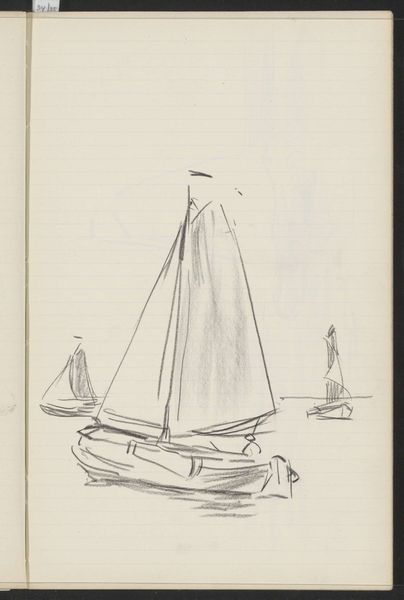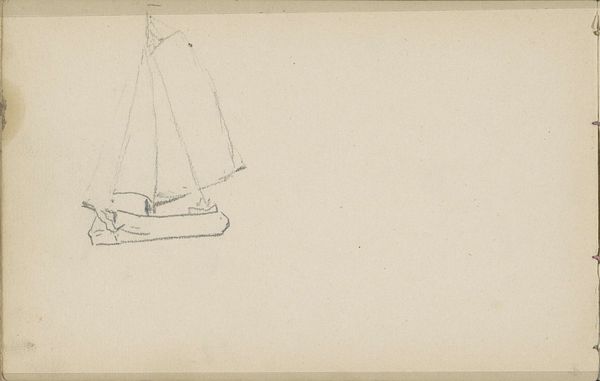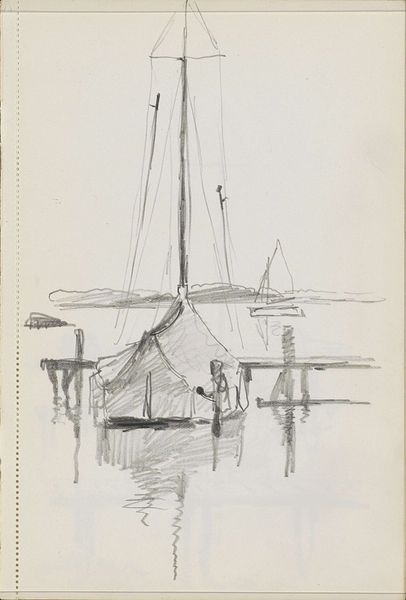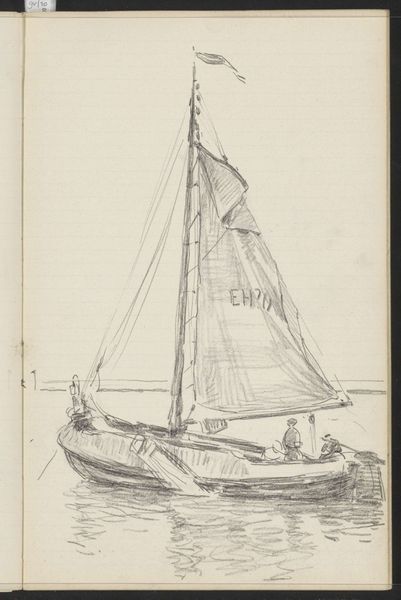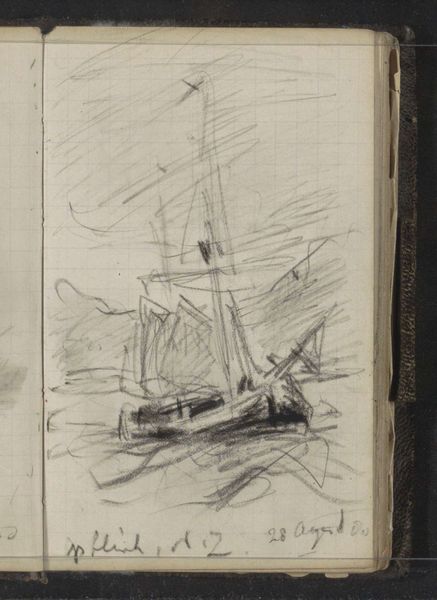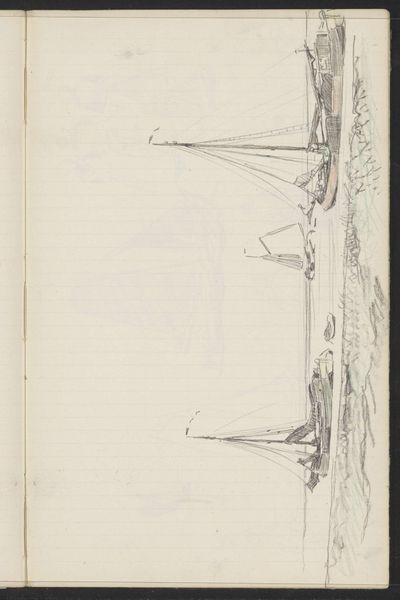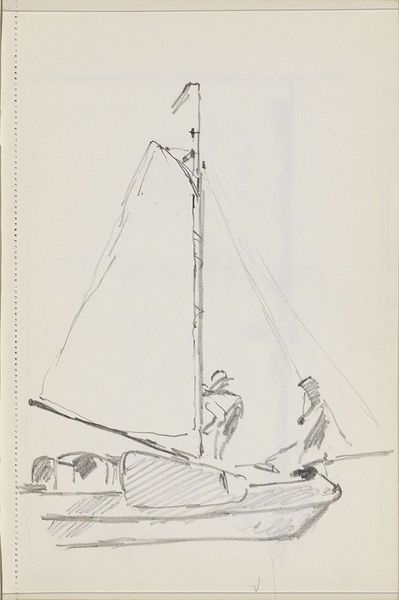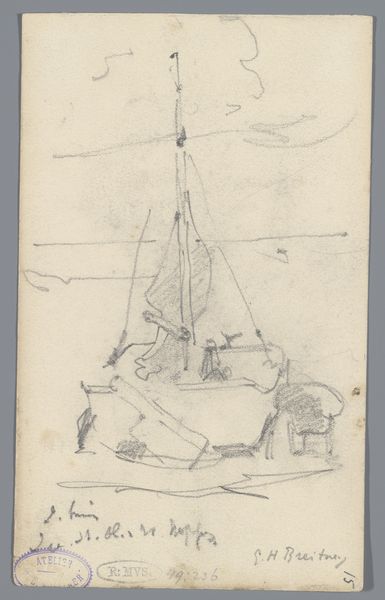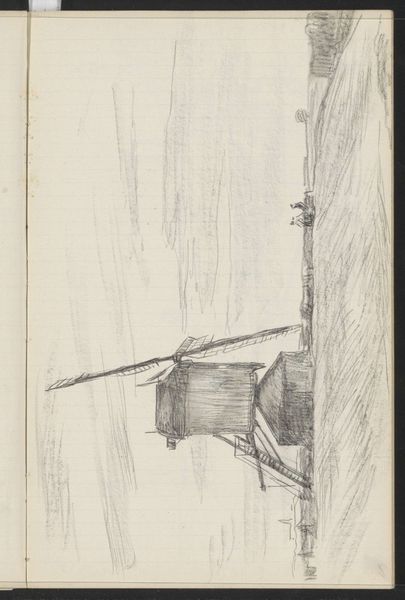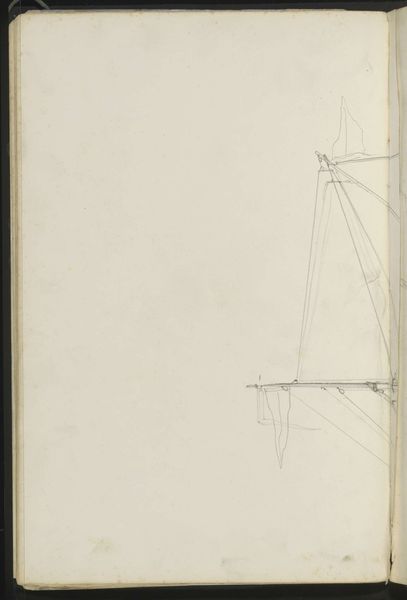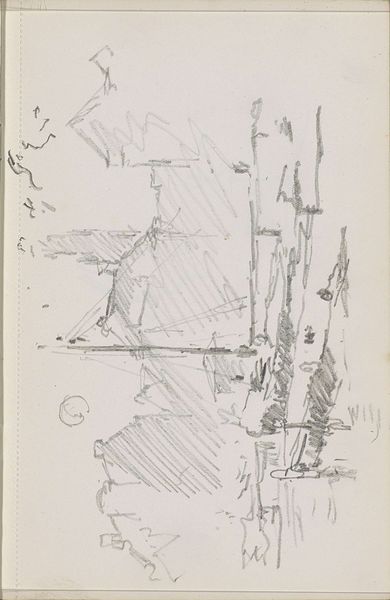
Zeilschip en een figuur gezeten in de top van een scheepsmast 1900 - 1931
0:00
0:00
Copyright: Rijks Museum: Open Domain
Curator: This drawing by Willem Bastiaan Tholen, simply titled "Zeilschip en een figuur gezeten in de top van een scheepsmast," from sometime between 1900 and 1931, catches the eye. It’s ink and pencil on paper. What's your immediate take? Editor: Well, the immediacy strikes me – it feels so fresh, like a glimpse into Tholen's sketchbook. It’s a very pared-down representation. The boat is dominant, almost aggressively sketched, but then there is this much more timid figure balanced in the mast, tiny. It projects intimacy. Curator: Yes, a candid glimpse! To me, the juxtaposition of the ship, a symbol of exploration and trade, alongside the solitary figure evokes this rich symbolic weight. That lone figure could signify anything from quiet contemplation to maritime power. The sketchy lines are like cultural echoes of Holland's Golden Age. Editor: Intriguing. The figure feels secondary though. I wonder if that's because our modern sensibilities deprioritize maritime exploration as a symbol. What stands out for me is the artistic act itself – a quick notation capturing a fleeting moment on the water, almost journalistic, don’t you think? I wonder who was intended to see it? Curator: I agree it gives that initial feeling, it’s direct. But the roughness is, in a way, carefully composed. This deliberate roughness makes one reflect about how idealized these Dutch harbors actually were during the early 20th century. Tholen might be reminding us that even these idyllic seascapes are the product of real labor. It gives a stark context. Editor: True. I suppose its value is in this ability to reveal the romantic and the unvarnished – as captured by someone on the spot with that rare access to wealthy sea-going activities. Its inclusion in the Rijksmuseum tells a tale about the evolving appreciation of spontaneity, of “captured reality,” within a major cultural institution, and the growing importance of informal expression as part of a larger historical narrative. It is also accessible, a quick visual impression for us to grab onto. Curator: Absolutely, and the very personal nature of the work creates that feeling of connection that speaks to the continued power of art to collapse time and culture. To me, this rough drawing still triggers the question what is balance? I would imagine it could generate interesting conversations and thinking for all kinds of visitors. Editor: Agreed, this simple sketchbook page speaks volumes. Curator: A small image that still makes you ponder and think beyond.
Comments
No comments
Be the first to comment and join the conversation on the ultimate creative platform.
